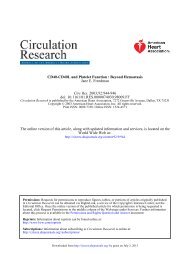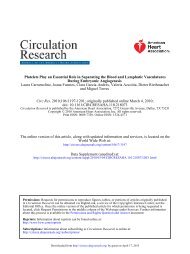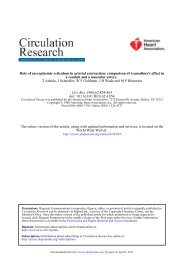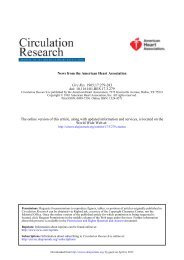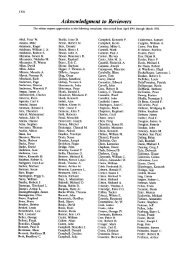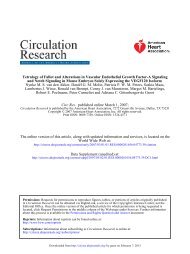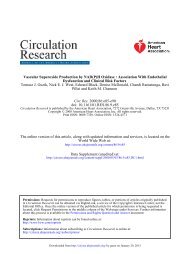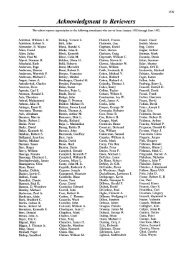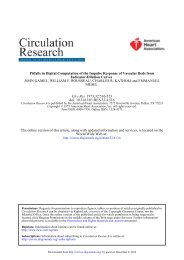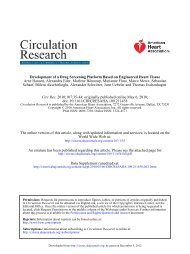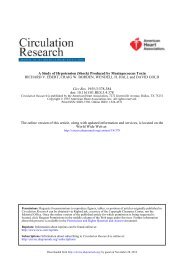Tsuji et. al. amniotic membrane-derived stem cell (2009/205260-R3 ...
Tsuji et. al. amniotic membrane-derived stem cell (2009/205260-R3 ...
Tsuji et. al. amniotic membrane-derived stem cell (2009/205260-R3 ...
Create successful ePaper yourself
Turn your PDF publications into a flip-book with our unique Google optimized e-Paper software.
<strong>Tsuji</strong> <strong>et</strong>. <strong>al</strong>. <strong>amniotic</strong> <strong>membrane</strong>-<strong>derived</strong> <strong>stem</strong> <strong>cell</strong><br />
(<strong>2009</strong>/<strong>205260</strong>-<strong>R3</strong>)<br />
Supplement<strong>al</strong> Materi<strong>al</strong> and M<strong>et</strong>hods<br />
1. The isolation of the <strong>amniotic</strong> <strong>membrane</strong>-<strong>derived</strong> mesenchym<strong>al</strong> <strong>cell</strong>s<br />
Amniotic <strong>membrane</strong> consists of f<strong>et</strong><strong>al</strong> <strong>amniotic</strong> <strong>membrane</strong> and matern<strong>al</strong><br />
deciduas. Deciduas are a part of uterine endom<strong>et</strong>rium, which <strong>al</strong>so<br />
contains a lot of cardiac precursor-like <strong>cell</strong>s (Hida <strong>et</strong> <strong>al</strong>., Stem Cells,<br />
2008; 26(7): 1695-1704). The speed of population doubling of matern<strong>al</strong><br />
endom<strong>et</strong>ri<strong>al</strong> <strong>cell</strong>s was significantly greater than hAMCs (18.2 ± 1.7 PDs<br />
at 40 days in endom<strong>et</strong>ri<strong>al</strong> <strong>cell</strong>s vs 6.68 ± 1.67 PDs at 40 days in hAMCs).<br />
Therefore, in our preliminary data, even if there was a sm<strong>al</strong>l amount of<br />
contamination of matern<strong>al</strong> <strong>cell</strong>s at the start of the culture, they quickly<br />
overcame the hAMCs and, fin<strong>al</strong>ly, the majority of the <strong>cell</strong>s became the<br />
matern<strong>al</strong> endom<strong>et</strong>ri<strong>al</strong> <strong>cell</strong>s. Therefore, a human <strong>amniotic</strong> <strong>membrane</strong> was<br />
collected after delivery of a m<strong>al</strong>e neonate in order to check the matern<strong>al</strong><br />
<strong>cell</strong> contamination in culture by the karyotype. At the 2 nd passage and<br />
10 th passage of hAMCs, the CEP X/Y DNA Prove Kit (Vysis) was used to<br />
d<strong>et</strong>ermine the proportion of XX and XY <strong>cell</strong>s in accordance with the<br />
manufacturer!s suggestions.<br />
hAMCs were isolated according to the m<strong>et</strong>hod previously described 1 with<br />
slight modification. Avascular transparent <strong>amniotic</strong> <strong>membrane</strong> was<br />
peeled off from matern<strong>al</strong> placenta and deciduas, rinsed with phosphatebuffered<br />
s<strong>al</strong>ine (PBS), chopped into sm<strong>al</strong>l pieces, and incubated in 2.4<br />
U/mL dispase II (Roche Diagnostics, 4942078) at 37ºC for 55 minutes.<br />
The <strong>membrane</strong>s were then incubated in 0.75mg/mL type-II collagenase<br />
(Worthington Biochemic<strong>al</strong>, NJ, USA) for 60 minutes at 37ºC. Isolated<br />
<strong>cell</strong>s were rinsed and seeded on a 10 cm culture dish with Mesenchym<strong>al</strong><br />
Stem Cell Bas<strong>al</strong> Medium (MSCBM, LONZA, PT-3238). After two or three<br />
days, the cultured dishes became subconfluent in a humidified and<br />
Suppl 5



